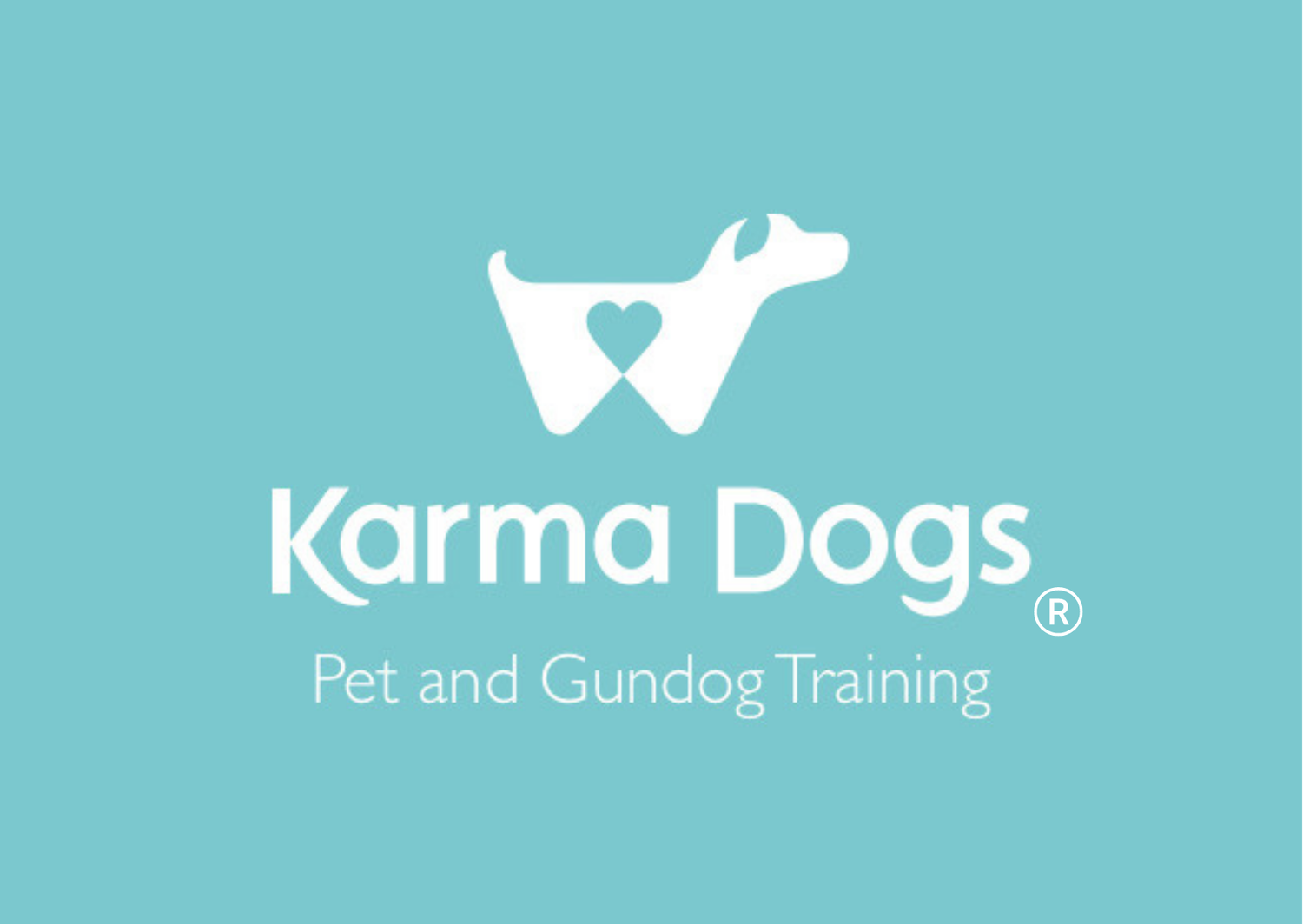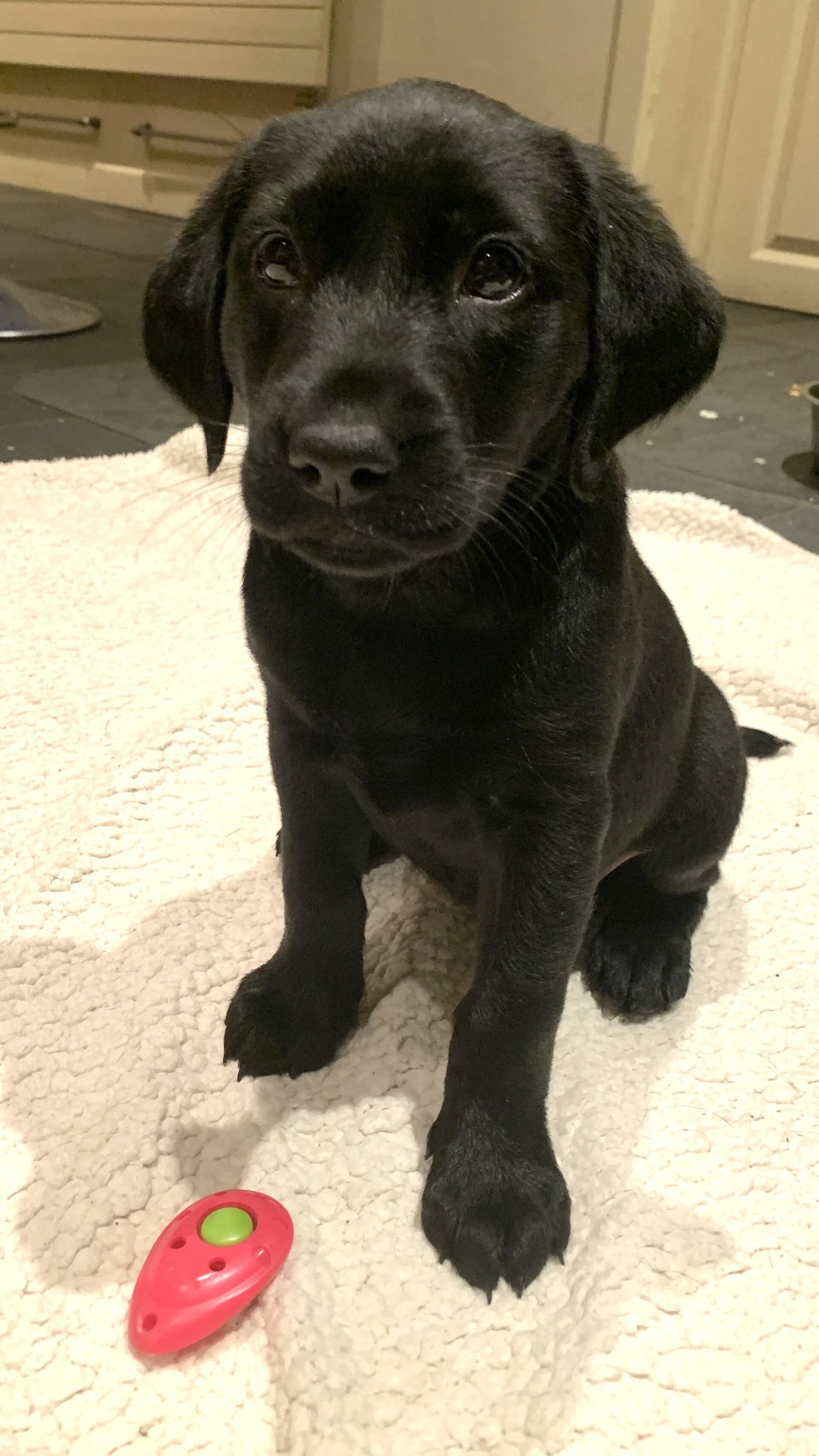Clicker Training
Early Clicker Training
A clicker is a unique sound that tells your dog they have done something good which will be rewarded with a treat and this makes your dog more likely to repeat that behaviour.
As dogs learn by association, so when you start the sound of the clicker will mean nothing to your dog. But soon your dog will realise that every click is quickly followed by a tasty treat, and the dog will start to think ‘what was I doing when I heard that sound and let’s try that again’.
And because we say a lot of things to our dogs, the clicker sound is new, and unlike most other sounds they hear, so your dog will pay more attention to it. Your clicker is like a camera taking a picture of your dog’s behaviour at that precise moment.
The first time you use a clicker, you need to teach your dog to associate the sound of your clicker with a tasty food treat. Take about 10-15 small tasty treats and either:-
throw them on the floor and every time the dog’s mouth touches the food, click.
or wait until your dog looks at you and click/throw them a treat (you have about 3-5 seconds to give your food treat).
or click and feed your dog close to you.
You are done when you can tell your dog gets excited when he hears the clicker sound expecting that a treat is coming. The idea is for the dog to associate the sound with the reward.
Not a remote control
Remember to keep your clicker by your side or behind your back (and try not to use the clicker like a remote control!).
Try and keep your body still so your dog isn’t using your dog as a cue for the behaviour you want.
Timing is the key!
If you say the marker a second or two later, you might be telling your dog they did something correct...but it's not the behaviour what you wanted. So, stay focused, if you are late with your click you still need to reward your dog, but try and be more precise next time.
Puppy Socialisation
Socialisation is VERY IMPORTANT as it helps your puppy learn how to cope withnormal, everyday events. But this is not simply about letting your puppy run around with other puppies. It is so much more than that.
Up to 16 weeks, puppies are going through the Critical Socialisation Period, which is. important stage of their development when their brains like sponges. During this period puppies are more able to cope with and accept new situations and environments.
Socialisation using one of our Puppy Buggies
But the lockdown brought some challenges to our socialisation plans. So Ally has written a detailed handout with lots of practical examples of ways of socialising your puppy.
Email us for a FREE copy of our Socialisation in Lockdown handout.
Please bin your Retractable Lead
Please ditch the retractable lead
Retractable leads are used by many dog owners but there are a number of reasons why I don’t recommend them. The main reasons are because they teach your dog to pull and to be too far away from their owners, which are unsafe and dangerous. So here are my reasons why I dislike retractable leads:-
In order to move forward, the dog learns that they need to feel the tension on the retractable lead and it simple teaches your dog to pull. And retractable leads allow dogs more freedom to pull at the end of them, which can look like aggression to another dog who may decide to “fight back.”
The length of a retractable lead allows dogs to get far to far from their owners which can quickly turn dangerous. I’ve seen dogs who dart into a road and get seriously injury or killed. Or your dog could be approached by an aggressive dog away from you and it is nearly impossible to keep your dog safe. It would be much easier to regain control of or protect your dog if they are on a normal lead than if they 10 metres. away from you.
The thin rope cord of a retractable lead can cause horrible injuries . I’ve seen severe burns an deep cuts on hands, arms and legs. It can even cause amputation to limbs and fingers of both humans and pets.
And retractable leads can break or malfunction. If a strong dog takes off at full speed, the cord can snap.
The owner can get tangled up in the cord of a retractable lead or grabs it in an attempt to reel in their dog, it can result in burns or cuts.
Some owners have been pulled right off their feet by a dog that reaches the end of the lead and keeps going. This can result in bruises, “road rash,” broken bones, and worse.
Dogs have also received terrible injuries as a result of the sudden jerk on their neck that occurs when they run out the lead, including neck wounds, lacerated tracheas, and injuries to the spine.
The handles of retractable leads are bulky and can be easily pulled out of our hands, so your dog can runaway.
Dogs, especially fearful ones, are frightened by the sound of a dropped retractable lead handle and may take off running, which is dangerous. The dog can than be frightened by the retractable lead which appears to be “chasing” them. This can lead to your dog being injured or may create a lingering fear in the dog not only of leads but also of being walked.
Retractable leads are an especially bad idea for dogs that haven’t been trained to walk politely on a regular leash. By their very nature, retractables train dogs to pull while on lead because they learn that pulling extends the lead.
So I would suggest you should throw your retractable lead away, buy a nice 2m lead like a Halti Training Lead and work on teaching your dog to walk nicely next to you. If you need help with them, give me a call.
Diet & Sleep
One of the first questions I ask dog owners I work with is. ‘What food are you feeding your dog and how much sleep are they getting?’
Imagine how you would feel if you ate poor qualit, processed food all the time and did not get enough sleep - I suspect you would be quite grumpy! Well it is no difference for your dog. Puppies need at least 16 -18 hours sleep a day and so a good sleep routine is essential. It is important that you research the food you are feeding your dog. This is an excellent website, which independently written and reviews over 250 brands of dog foods and treats that are available in the UK.
Incredibly almost 90% of all pet food sales in the UK are from just three companies. - Mars (who produce Pedigree, Cesar, Chappi, Frolic, Kitekat, Pal, Nutro, Greenies, James Wellbeloved, Royal Canin, Sheba, Whiskas); Nestle (who produce Bakers, Beneful, Beta, Bonio, Felix, Friskies, Just Right, ProPlan, Purina One, Purina Veterinary Diets, Winalot) and Colgate-Palmolive (who produces Hills Science Plan, Hills Prescription Diets).
You can search this website to see the nutritional content of the dog food brand you are feeding your dog and the results might surprise you! Puppies need good nutrition as they are growing so much in that first year, and you should aim to find a food that has a nutritional rating that is at least 85%. The website has lots of useful feeding articles too. I would say ‘feed the best you can afford’ and this is often not the most expensive, well known brands. Also think about dog treats too. Many heavily marketed, over processed dog treats like dental sticks are full of sugar and can lead to hyperactivity and obesity in our dogs. There are a growing number of pet owners who raw feed their dogs and here are some useful sources of information:
Honey's Natural Feeding Booklet is an excellent introduction to raw feeding, in a a handy little booklet.
Fox Pet Stores Glossop stocks a wide range of natural treats, raw dog food and good quality dried dog food brands like Eden.
RawFeed4Us in Hyde has a wide range of raw food brands and natural treats.
Dr Nick Thompson, The Holistic Vet is a good source of information and has written a short course on raw feeding which is only £9.99. Here's the link:- Raw Food The Basics
Dr Conor Brady's has written an excellent book about raw feeding and has lots of useful articles on his website: DogsFirst
RawPetMedics is a great Facebook group exploring canine wellness, with weekly lives every Tuesday.





